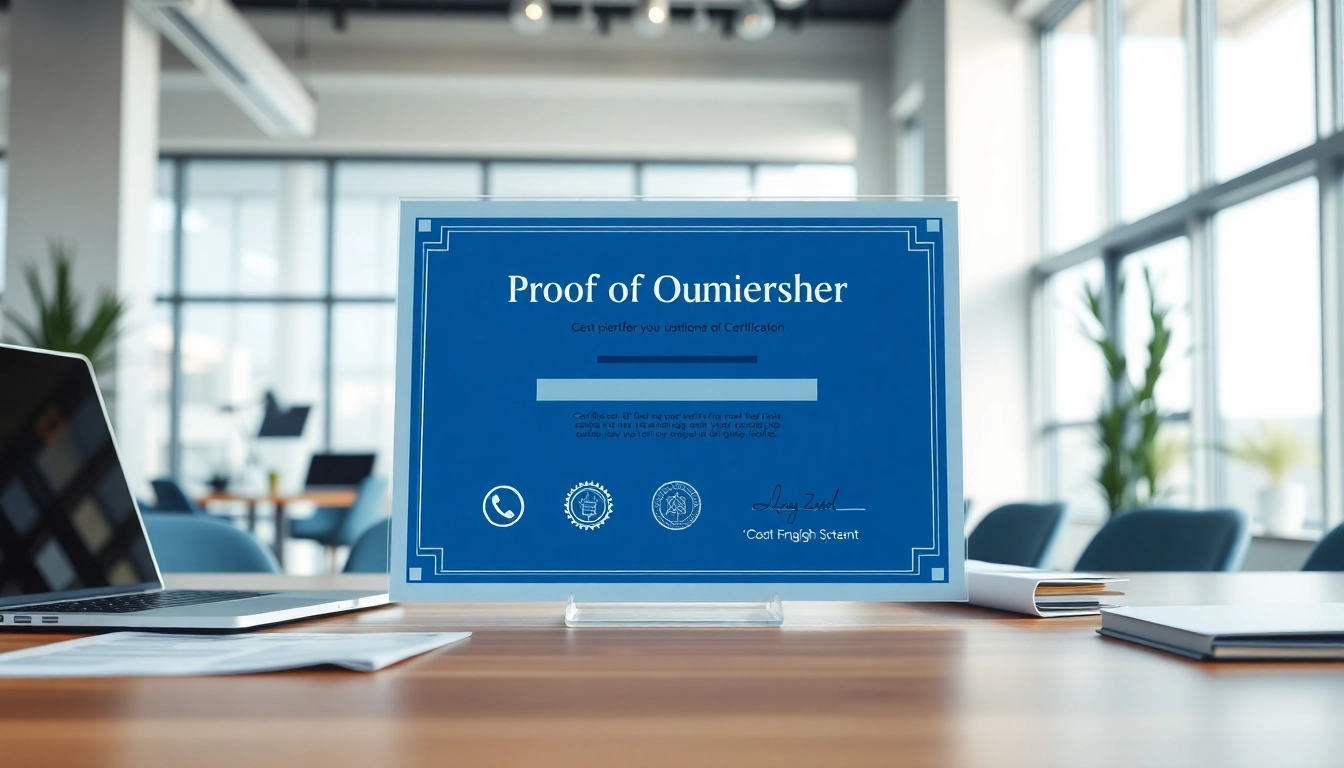What is Digital Proof of Ownership?
Definition and Importance
In today’s digitized world, the concept of ownership has evolved significantly. Digital proof of ownership refers to a secure method of establishing and verifying ownership of digital assets using advanced technologies. This method is paramount as it establishes a clear, undeniable connection between an individual or entity and their digital assets, encompassing everything from cryptocurrencies and digital art to software licenses and domain names. As transactions increasingly occur online, having robust digital proof of ownership is essential in fostering trust and ensuring the security of these exchanges. Utilizing digital proof of ownership not only enhances security and reduces fraud but also enhances buyer confidence in digital transactions.
How It Works
Digital proof of ownership is usually facilitated through technology such as blockchain, digital certificates, or smart contracts. Blockchain technology, for instance, relies on decentralized ledgers that transparently record transactions, making it nearly impossible to alter or delete data once recorded. This process ensures that the authenticity and originality of digital assets can be confirmed without relying on a central authority.
When an asset is created or acquired, it is linked to a unique identifier, such as a hash in blockchain terminology. This identifier is stored on the blockchain, and each transaction involving the asset is recorded as a new block within this chain. The result is a verifiable history of ownership that can be traced back to the origin, providing a comprehensive proof of ownership framework.
Real-World Applications
The applications of digital proof of ownership are vast and expanding across various industries. In the art world, digital artists now utilize non-fungible tokens (NFTs) to provide proof of ownership for their works, allowing for secure sales and authenticity verification. Similarly, in real estate, blockchain can streamline title transfers by providing indisputable records of property ownership. Other sectors benefiting from this technology include finance, music, and intellectual property, where digital rights management can be significantly improved.
Benefits of Digital Proof of Ownership
Enhanced Security Measures
One of the primary benefits of digital proof of ownership is the heightened security it offers. Traditional methods of proof often depend on physical documentation, which can be lost, stolen, or forged. Digital methods minimize these risks by using cryptographic techniques to protect data integrity and ensure authenticity. Whether it’s through secure public and private keys in blockchain or the encryption of digital certificates, these modern systems significantly reduce the chances of fraud.
Building Trust in Transactions
Trust is an inherent component of any successful transaction. Digital proof of ownership helps establish this trust by providing verifiable and transparent ownership records. In online marketplaces, for instance, buyers can check proof of ownership before making purchases, which can lead to higher confidence levels and repeat business. Additionally, as the world becomes more aware of cyber threats, consumers are more likely to engage in transactions that utilize proven security measures.
Reducing Fraud Risks
Fraudulent activities, such as counterfeiting and identity theft, are prevalent in both digital and physical marketplaces. Digital proof of ownership significantly mitigates these fraud risks. Using unique digital signatures and blockchain technology, each transaction can be authenticated and linked to the rightful owner, making it challenging for nefarious actors to manipulate ownership records or misrepresent assets. This level of security is especially vital for high-value assets, where the cost of fraud can be catastrophic.
Implementing Digital Proof of Ownership Solutions
Choosing the Right Provider
Selecting a reliable provider for digital proof of ownership solutions is a critical step for businesses and individuals alike. When evaluating potential providers, consider factors such as the technology they use, their track record with security, ease of integration with existing systems, and customer support services. It’s prudent to seek testimonials or case studies from other users to gauge effectiveness and reliability.
Best Practices for Organizations
Organizations looking to implement digital proof of ownership should adhere to best practices to maximize the effectiveness of their strategy. First, invest in training employees about the importance of digital asset security and the methods they can use to verify ownership. Second, ensure that all digital assets are entered into secure systems promptly and monitored regularly for any unauthorized access. Finally, establish a clear policy concerning digital asset management that aligns with operational goals and regulatory requirements.
Case Study: Success Stories
A notable example of successful implementation can be seen in the art industry, where artists like Beeple have leveraged NFTs to showcase and sell digital artworks. This has enabled artists to take control of their creations in ways that were not feasible before. As a result, artists can directly sell to consumers and receive a percentage of resales, thereby building a sustainable income model while ensuring ownership is unambiguously established through digital proof mechanisms.
Challenges and Considerations
Overcoming Implementation Barriers
While the benefits of digital proof of ownership are considerable, there are barriers to implementation. One major challenge is the technical complexity associated with blockchain and digital certificates. Organizations may lack the technical know-how or resources needed to effectively integrate these systems. To address this, a phased approach can be adopted, starting with pilot projects that allow stakeholders to become familiar with the technology before scaling operations.
Legal and Regulatory Implications
Another complexity lies in the legal and regulatory environment surrounding digital assets and proof of ownership. Legal interpretations of digital ownership vary significantly across jurisdictions, creating confusion and potential compliance issues. To navigate these waters, organizations should engage legal counsel versed in digital asset law to ensure their practices align with existing regulations and protect themselves against future liabilities.
User Adoption and Education
No matter how sophisticated a digital proof of ownership system may be, it will fail without user adoption. Many individuals and organizations may be hesitant to embrace new technologies, particularly if they do not understand their value. Education is key—by providing resources and workshops demonstrating the benefits of digital proof of ownership, organizations can facilitate smoother transitions and enhance the overall acceptance of these systems.
The Future of Digital Proof of Ownership
Trends Shaping the Industry
The landscape of digital proof of ownership is rapidly evolving as new technologies emerge. Significant trends include the growth of decentralized finance (DeFi) along with the increasing adoption of cryptocurrencies, which are heavily reliant on secure proof of ownership systems. Moreover, as the demand for digital assets rises, particularly in sectors like gaming and virtual real estate, the need for robust proof frameworks will only intensify.
Potential Innovations
Future innovations in digital proof of ownership could see the incorporation of artificial intelligence and machine learning. These technologies can enhance security protocols by predicting potential fraud attempts or automating the verification processes for ownership transfers. As data analytics becomes more sophisticated, organizations may develop smarter, more adaptable systems that can further enhance the security and effectiveness of proof of ownership methods.
Conclusion: Preparing for Tomorrow
As digital assets continue to define the future of business and personal transactions, the importance of reliable digital proof of ownership cannot be overstated. Organizations and individuals must invest in understanding and implementing these systems to ensure security, build trust, and mitigate fraud risks. The future holds exciting possibilities for those prepared to embrace the technology and innovate within their sectors, ultimately shaping a safer, more trustworthy digital landscape.



